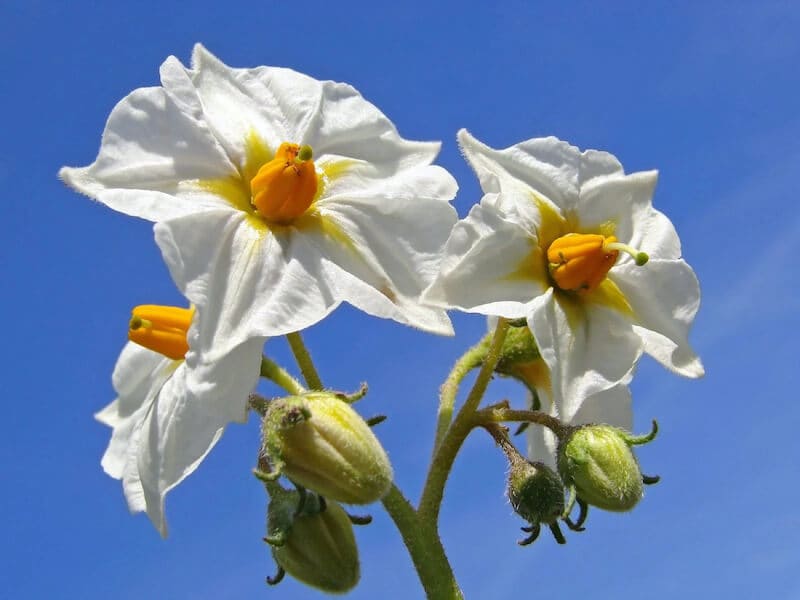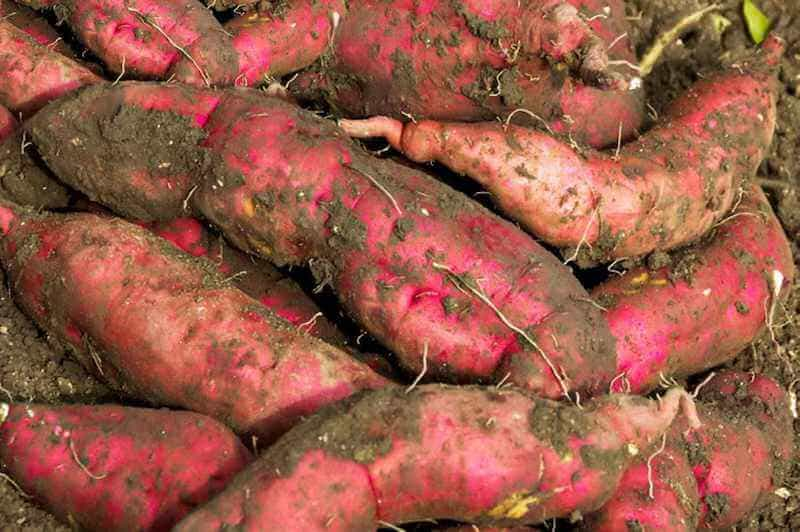
Potatoes are the third most widely grown staple crop in the world behind rice and corn and millions of acres are under production. Typically, potatoes are grown in parallel raised rows. In the western United States, potatoes are grown under large pivot irrigators that water potato plants from above periodically throughout the day.
Few potatoes are harvested by hand, most are mechanically harvested for the food processing industry, for potato chips, fries, and many other packaged products.
Mechanized agriculture, specifically growing potatoes in cultivated rows, can have several environmental impacts. Here are some potential concerns:
To minimize these environmental impacts, sustainable farming practices can be adopted. These can include using crop rotation to maintain soil health, planting cover crops, and reducing chemical inputs through integrated pest management practices. Efficient irrigation help reduce the use of water. Combined with no-till agriculture, these watering systems prevent soil compaction, which prevents soil bound air pockets that benefit plants from collapsing and improves soil biology.
Growing potatoes in a city at scale is impossible because land size is too small for tractored field production, so potatoes are shipped in from elsewhere to just about every city in the world.
To grow potatoes cheaply, and at scale in urban centers would be a boon for urban farmers and a supply of freshly harvested potatoes would be appreciated by their customers. A circle shaped potato grower has been developed by Crop Circle Farms ® that can grow three thousand pounds of potatoes in just 20 feet of space.
The Crop Circle Farm potato grower assembles on site in just an hour and disassemble just as quickly at the end of the season. The assembled panels create a cavity, which is filled with loose loamy soil mixed with aged animal manure and plant compost. Specific fertilizers can be layered in for different stages of potato development. Nitrogen in the top layer will enhance potato plant top growth once they emerge from the soil, for example.
Several Crop Circle Farm potato growers strategically placed in several locations throughout a town or city would address food desert and food security issues in poorer neighborhoods and they grow just about anywhere: rooftops, empty city lots, parking spaces and community gardens.


Any type of potato can be grown in the grower including varieties of root (seed potatoes) and sweet potatoes (slips). Root potatoes are typically found in the supermarket sold as russet (the potato most prepared as a baked potato), red (new potatoes), fingerling (for finer restaurants) and white (an all-purpose cooking potato).
Root type potatoes are started with seed potatoes, which are typically the previous year’s storage potatoes. Seed potatoes are covered with eyes (buds where new potato shoots will sprout from). Specially bred seeding potatoes are specifically grown for commercial growers all of which are genetically modified.
Seed potatoes are small, whole potatoes or pieces of larger potatoes that are used for planting to grow new potato plants. Seed potatoes are specifically grown and harvested for the purpose of planting. Unlike the potatoes you find in the store, they are never treated with chemicals to prevent them from sprouting.
Seed potatoes are typically disease-free and have been certified by agricultural authorities to ensure their quality. They are also selected for their ability to produce healthy potato plants with good yields. It is important to choose the seed potato that has been grown for your region and climate. Choosing to plant seed potatoes instead of seed will guarantee a potato harvest at the end of the season.
The Crop Circle Farm Potato Grower assembles into a 15 panel circle that is filled with loose-composted soil that will cover approximately 200 seed potatoes laid out over the soil at grade at the bottom interior of the grower. The potatoes then are covered with 3 layers of enriched growth medium: the lowermost layer high in Potassium, which will improve the storage life of a potato; the middle layer high in Phosphorous, which will increase the number of tubers (potatoes) per plant and the uppermost layer high in Nitrogen to assist in early plant development.
A subterranean soaker hose is spiraled up through the 3 layers to ensure that potato plants are watered deep into the soil.
As the potatoes sprout, they push root stem up from each eye and within a week or two, new potato plants will emerge from the growth medium at the top of the grower. Tubers (horizontal roots) will form along the length of each root stem as the plant grows. Flowering is a sign that new potatoes are forming along each of the tubers.
An early harvest will reap new potatoes; however, leaving them in the soil for a month or more will give potatoes time to develop thicker skins, which will extend their time in storage.
Choose a potato variety that is suited to your growing conditions and has a reputation for high yields. Some high-yielding varieties include Yukon Gold, Kennebec, and Russet.
When planting, make sure to plant seed potatoes with the sprouts facing up. Cut larger seed potatoes into smaller pieces, making sure that each piece has at least one sprout. Allow the cut pieces to dry for a day or two before planting to help prevent rotting.

Sweet potatoes are a warm season crop that require at least 8 sunshine hours per day and temperatures of around 80 plus degrees throughout the afternoon. They are an excellent source of Vitamin A and C and a good source of dietary fiber.
After the panels are assembled, the potato grower is filled with an enriched soil halfway to the top and then filled the rest of the way with a mixture of aged plant and animal compost that contains Phosphorus, Potassium and Nitrogen. Two hundred potato slips transplanted a foot apart across the surface of the growth medium at the top of the grower will grow 2,000 pounds of sweet potatoes.
Sweet potato slips are delicate, so it is important that slips are hardened off before transplant. Within a few weeks they will start to vine, first on top of the growth medium, then down over the sides of the grower and across the surrounding area, which can be optionally covered with a ground cover used to suppress weeds. It would be practical that the grower be assembled on top of an expanse of ground cover for the vines to grow over. The ground cover will provide a clean surface for the vines to gather upon.
At end of the season, the Crop Circle Potato Grower is disassembled and stored over winter. It is reassembled in the spring, filled with soil and fertilizers, and planted with seed or slips potatoes. Depending on the climate and length of season, two crops of seed potatoes may be grown and harvested and just one for sweet potatoes.
Ready to transform your land into a high-yield, sustainable farm? Let Crop Circle Farms design and build a custom, low-impact, and water-efficient farm tailored to your needs. Double your income and cut your costs in half! Contact Us
Help us expand our mission to revolutionize agriculture globally. We are seeking partners to implement Crop Circle Farms to feed people in need. Together, we can build scalable food production systems that save water, reduce costs, and feed thousands of people. Contact Growing To Give